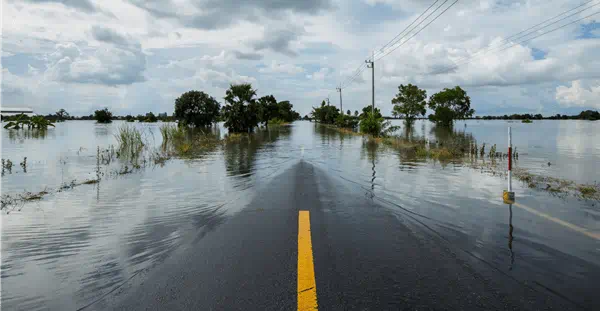Climate risk refers to the potential financial, social, or environmental harm caused by climate change. Climate risk is broadly defined as the range of potential business and financial impacts that organizations may face resulting from the effects of climate change. These risks are categorized as either physical risks or as transition risks.
Physical risks arise from the increase of extreme climate-related disasters like wildfires, storms, floods and heatwaves and events like droughts, landslides, sea-level rise and precipitation. Transition risks come from trying to slow down the rate of climate change by transitioning from reliance on fossil fuels towards a low-carbon economy. They stem from changing policies, evolving technology and shifting sentiments.
To respond appropriately, we need to identify climate risks and assess their potential impact. One way to do this is to conduct Climate Scenario Analysis (CSA). Climate scenarios provide a range of possible future climate conditions and associated impacts, allowing decision-makers, researchers, and policymakers to explore different possibilities and develop strategies for adaptation, mitigation, and resilience. The two scenarios usually considered are a Low Carbon Scenario and a High Carbon Scenario.
The Low Carbon Scenario aligns to 1.5-degree warning and represents the rapid decarbonization that is needed to avoid the worst impacts of climate change. Impacts of transitioning to a low carbon economy are likely to be greater in this scenario as governments worldwide commit to driving down emissions. For example, one might see higher carbon prices or greater business regulation.
The High Carbon Scenario represents a 4 degree raise in temperature - ‘Business as usual’ with no policy changes leading to growth in emissions, causing physical effects of climate change to be felt with greater severity. In this scenario one is more likely to see high temperature increases, high rates of sea level rise, and increased frequency and intensity of extreme weather events.
CSA is a method used to assess the potential impacts of different climate change scenarios on various aspects, such as businesses, industries, investments, and policy decisions. This analysis assists in developing robust strategies, policies, and investments that are resilient to climate change. It supports the transition to a sustainable, resilient, and climate-friendly future.
Qualitative scenarios consider broader socioeconomic factors, policy choices, and potential climate impacts on ecosystems, water availability, and human systems. The broad steps to conduct a qualitative CSA are:
- Identifying key climate-related risks and rating their likelihood and impacts. It is important to note that these impacts are based on scientific projections and can vary across regions.
- Conducting a qualitative review of 1.5°/2°C and 4°C climate scenario impacts
- Presenting the outcomes to key stakeholders.
A qualitative CSA workshop can be a valuable way to engage stakeholders, experts, and decision-makers in exploring potential future scenarios and assessing their implications. When conducting a climate risk assessment, it's important to ask a wide range of questions to comprehensively understand the potential impacts of climate change. These questions can serve as a starting point for a comprehensive climate risk assessment, helping to identify vulnerabilities, prioritize actions, and develop effective adaptation strategies.
Tailoring the questions to the specific context and location is essential for a thorough assessment. Risks are identified and rated in the workshop. Once the ratings are assigned, the scores can be combined to obtain an overall qualitative rating for each risk factor. The rating scale and descriptors should align with the specific context and objectives of your climate risk analysis.
Most organizations like to tabulate risks into a risk register. By doing so, organizations can effectively document, analyze, prioritize, and manage risks in a structured and systematic manner, enhancing risk management capabilities and supporting informed decision-making. While tables offer advantages in presenting risk analysis results, it's important to ensure that the table design is clear, well-structured, and effectively conveys the relevant information. Heat maps are another powerful and effective way to present risk analysis results, enabling stakeholders to quickly grasp the key risk areas, patterns, and trends. They enhance communication, facilitate decision-making, and support targeted interventions for managing and mitigating risks.
Climate risk reports should inform a company’s leaders and stakeholders, and in some cases the general public, about the risks an organization may face currently and in the future. The report should advise decision-makers within the organization about possible resilience and adaptation actions that can be taken. This could include resource efficiencies and cost savings, the adoption of low-emission energy sources, the development of new products and services, access to new markets, and building resilience along the supply chain.
Climate scenario analysis can strengthen a company's climate resilience by providing insights into potential future climate-related risks and opportunities. When companies understand the potential impacts of climate change on their operations, supply chains, and overall business strategy, they can develop more robust risk management strategies, identify new business opportunities in a changing climate, and enhance overall resilience to climate-related challenges.
About our author
Vidya Murugan is a certified risk management professional with a background in engineering. She is a project controls and sustainability consultant working on multi-million and billion dollar construction projects. Her experience includes advising lenders, government bodies and others on project risks and working on compliance with the Task Force on Climate-Related Financial Disclosure recommendations.




